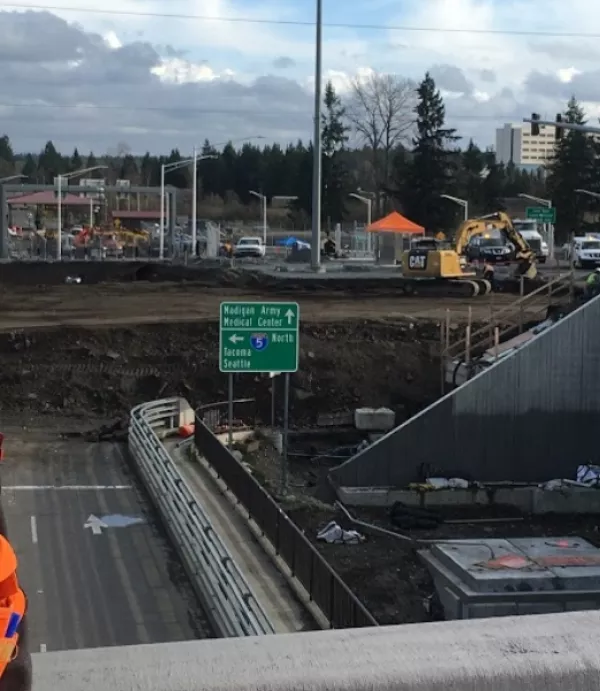The Building Blocks of Construction
November 15, 2018

It was a bit of an odd sight. If you were to look at Renton, WA’s I-405/SR 167 Direct Connector in June, you would have seen a wall of white cubes nestled along the roadway. While they may look like enormous sugarcubes or marshmallows, these giant blocks weren’t for giant cups of tea or hot chocolate. It’s actually a geofoam system that is critical to building a bridge approach ramp. Atkinson’s Direct Connector project includes a new flyover ramp that will connect the I-405 HOV lanes to the SR 167 HOT lanes. As part of the project, the team needed to construct approach ramps on SR 167 and I-405. Here's a look at the challenge they faced and the solution the team developed:
WHAT WERE THE CHALLENGES?
1 On the SR 167 side of the ramp, the site had soft underlying soil. Traditional compacted fill material for the ramp would be far too heavy for the underlying soil condition. It would settle or sink over time under the weight of the fill that would make up the ramp. In the event of a major earthquake, it would be significantly worse.
2 There is minimal space between the construction site and the traveling public. If timber piles were utilized to stabilize the underlying soil, the team would have difficulty driving the 40-foot-long piles between two freeways while maintaining a safe distance from traffic.
3 Driving 3,000 timber piles would be noisy, and the work would have to happen at night due to access and safety considerations. The team didn’t want to bring more noise pollution to the area than necessary.

HOW IS GEOFOAM THE SOLUTION?
1 Geofoam weighs a fraction of what normal soil weighs. Each standard block weighs 248 pounds. With 2,700 blocks comprising the soil replacement, that equates to 700,000 pounds. It sounds like a lot, but it’s actually quite light. If the team had used compacted fill, the structure would have weighed up to 100 times more. The team excavated a few feet of the pre-existing soil to add 30 feet of geofoam on top. The resulting structure is seismically stable.
2 The team didn’t need to transport timber piles across the freeways. Geofoam provided a safer solution with minimal impact to freeway traffic. As an added bonus, because the team didn’t need to execute a ground improvement process, geofoam saved the project time, too!
3 Atkinson’s geofoam approach eliminated any additional noise. This minimized the project’s disruption to its neighbors.
Once the geofoam was in place, Atkinson’s team tied reinforcing steel on top of the foam structure between the ramp walls and poured concrete over the steel to create the approach ramp. The I-405/SR 167 Direct Connector is scheduled to complete in May 2019.


